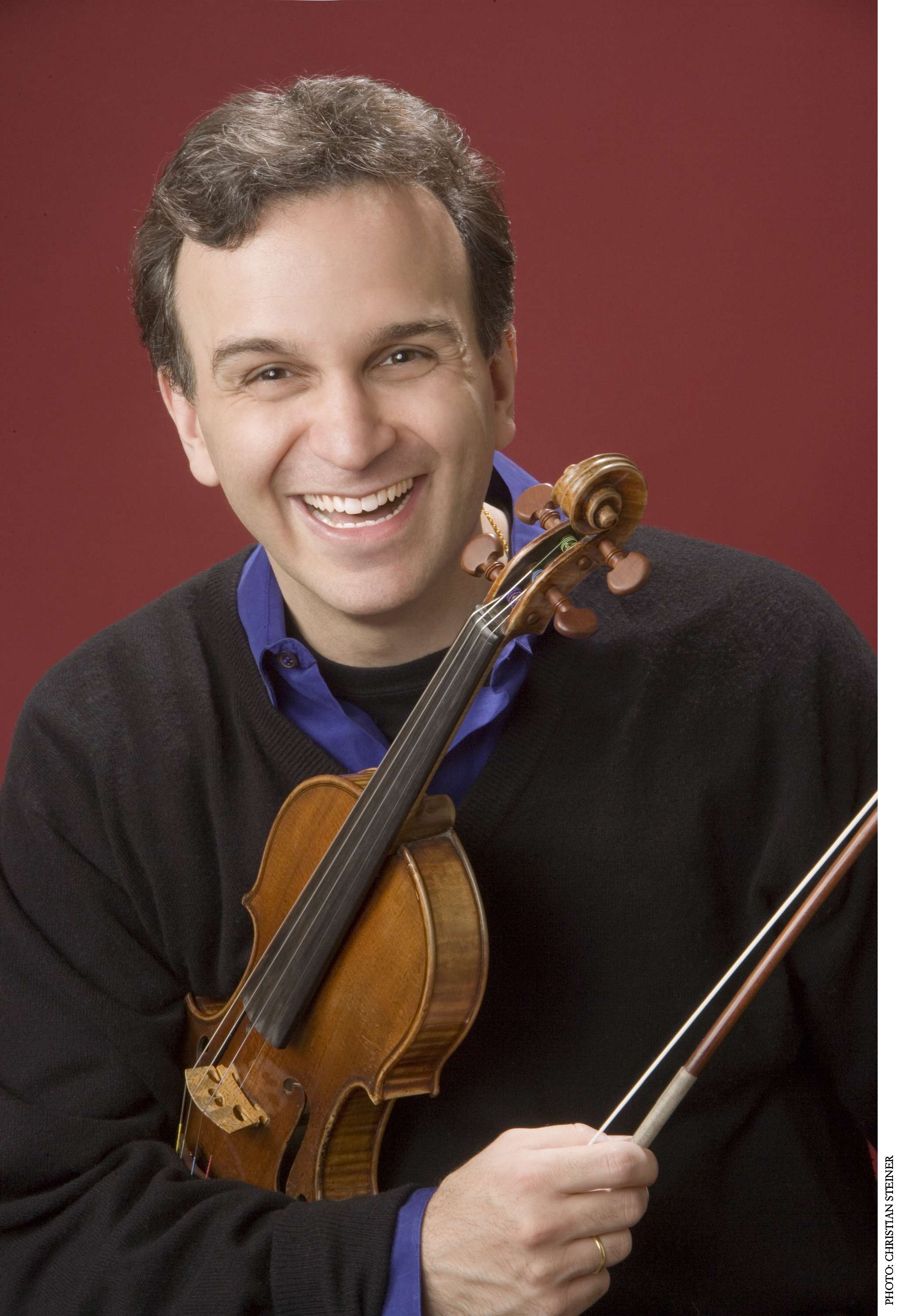|
Back
Singing and Dancing on a Midwinter's Eve Houston
Jones Hall
02/03/2011 - and February 5, 6, 2011
Benjamin Britten: Sinfonia da Requiem, Op. 20
William Walton: Violin Concerto
Ludwig van Beethoven: Symphony No. 7 in A Major, Op. 92
Gil Shaham (violin)
Houston Symphony Orchestra, Hans Graf (conductor) 
G. Shaham (© Christian Steiner)
Inclement weather in the Houston area resulted in a small crowd for a mostly pleasing evening of two important but seldom heard British works and Beethoven's popular dance symphony. The performances were a mixed bag, with excellent advocacy from the orchestra and soloist at times undone by flagging precision.
Britten's first indisputable masterpiece, the Sinfonia da Requiem sends a powerful message in its unusual design. It is the composer's first thoroughly successful merging of powerful programmatic content and technical wizardry, presaging in purely instrumental garb many of the elements that make his operas so engaging, enduring and important. Mahlerian in its handling of the large orchestra and subtle use of major/minor chiaroscuro, Britten at his most characteristic emerges in the bittersweet, pungent D Major finale. Graf skillfully managed the opening cortège, the orchestra placing just the right amount of emphasis on the constantly syncopated and overlapped figures that push inextricably forward. The 'Dies irae' middle movement started with razor sharp precision from the strings' galloping figures, but the trio disappointed with atypically timid and insecure horns unable to stand up to the brilliantly played trumpet figures. The graphically portrayed death throes at the end of the movement saw the orchestra realigning in colorful, grotesque spurts and groans. Graf failed to find the molto tranquillo mood in the finale, however, his tempo a tad too quick and the opening flute trio a tad too loud. That said, the peroration at the end was majestic and the strings produced a glorious, full-throated sound in their stratospheric registers.
An endearing video with Gil Shaham introducing the Walton concerto preceded his performance of it. It's an odd work, but has the potential to truly stun the audience, especially with violin playing of Shaham's caliber. Unfortunately, soloist and ensemble were often at odds. Perhaps Shaham's extreme sotto voce opening came as a surprise, but his initial melodic statement was lost in overly loud woodwind playing that was further marred by spotty intonation on the low end. Shaham clearly had a quicker tempo in mind in the development section, and the characteristic brassy Walton venom that makes his music so delectable at times failed to congeal. This was even more problematic in the outer sections of the second movement, and instead of the wittily punctuated ending that Walton composed, coordination was lost and the movement closed with a schism. Shaham again seemed to want to push forward at the opening of the finale but seemed unable to convince the podium. He is an ideal violinist for this work, with his glorious, warm tone in all registers matched by technique that would have made Heifetz green with envy. Sadly, there wasn't a meeting of the minds on this night.
Beethoven's 'apotheosis of the dance' was also a mixed bag. The introduction was nicely sculpted, with long lines leading nicely to the main Vivace. I was disappointed that the exposition repeat was omitted, but the orchestra played with nice rhythmic lilt and the movement featured especially fine flute and horn work. The second movement was a calling card from the pre-HIP era of Beethoven performance. At first the tempo seemed far too slow to be truly Allegretto, but this was the highlight of the performance and perhaps the entire evening. Dynamic contrasts were nicely played up, ensemble was tight and wind solos were tastefully phrased. The third movement, on the other hand, misfired. Without a few bars of mark time rhythm like one finds in the first movement and the finale, the orchestra has to be immediately drawn into precise rhythmic unison; instead, the strings were slightly off after the initial tutti and took several bars to come back into focus. The finale also had too many moments of slightly skewed ensemble work that overwhelmed the potential energy of Graf's perfectly judged tempo. The final climax saw the horns overwhelming the texture instead of contributing powerfully to it. In all, this was a serviceable reading of the work, even if orchestra occasionally seemed to be dancing with two left feet.
Marcus Karl Maroney
|